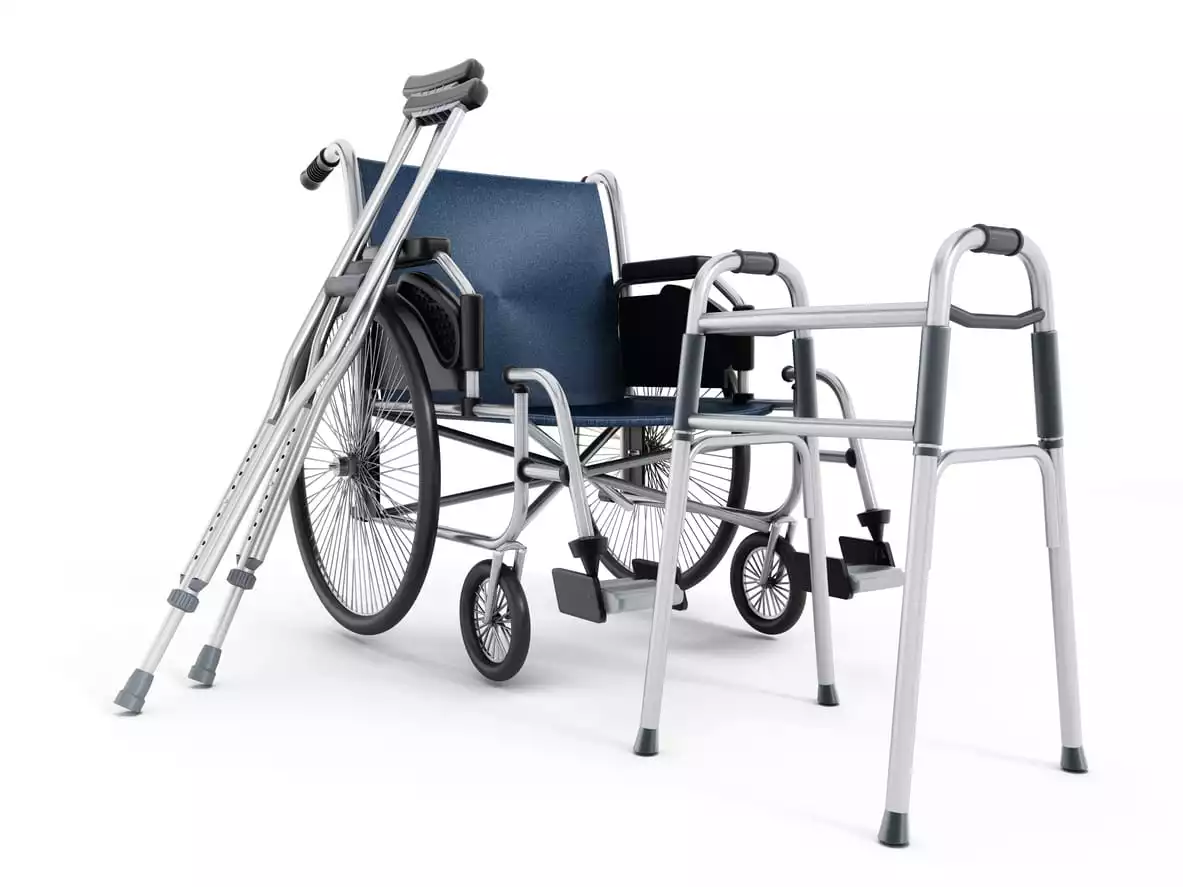
Are you struggling with the ability to walk comfortably and securely? According to the website DisabledWorld.com, you aren’t alone. Nearly 6.8 million Americans “use assistive devices to help them with mobility,” including wheelchairs, scooters, canes, crutches, and walkers. Of these devices, it is canes, crutches, and walkers that support the patient’s ability to remain independent and walk safely most often. Called walking aids, these devices preserve freedom and help America heal from injuries without further jeopardizing health. The information in this primer will help you to better understand when you might need a walking aid and which is best for your condition.
A Note on Personal Assessments
Walking aids are readily available in most pharmacies. However, that doesn’t necessarily mean you should pick the first walking aid you find. In fact, most pharmacists and physicians will recommend that you avoid using a mobility aid of any kind without a pre-assessment for suitability. This is because using any kind of mobility device incorrectly can actually cause more harm than good. This is true especially with regard to arthritis and injuries.
Instead, you should seek a recommendation from a member of your medical care team. Then, have your pharmacist measure you to ensure you receive a device that fits. From there, you can try on various walking aids until you find the solution that is most comfortable for you. Most patients have multiple options — we’ll review those next.
Canes
Canes are the simplest method of walking support. They’re stylish, readily available in most pharmacies, and available in many different styles, shapes, and sizes to best suit the patient’s condition. This device is best used by those who experience chronic pain or mild weakness when walking, but may not be a good choice for patients with extensive weakness and/or pain.
Common tip options include:
- Single-point
- Multi-point
- Quad-point
The single-point is a standard, one-tip cane. The multi-point and quad-point tips have three or four tips to provide additional support. Patients who really struggle with weakness or with hand and wrist conditions should use a cane with a molded hand grip, rather than a simple J-shaped cane.
If you already use a cane, but are still experiencing problems walking, it may be time to graduate to a more supportive walking aid.
Crutches
Crutches work similarly to canes, but support both sides of the body rather than just one side. They take pressure off of one or both legs and/or hips, spread it out under the arm or across the forearm instead. Having a tip on each side allows the patient to prevent pressure on the affected limb or ameliorate weakness while the injury or condition heals.
Crutches are by far the most common walking aid used in hospitals, rehab centers, and at-home patient care for injuries like broken legs and sprained ankles. They’re easy to adapt to, can be picked up or put down as needed, and are generally very affordable, too.
Like canes, crutches must be sized appropriately for your body in order to work correctly. However, they differ from canes because they aren’t really designed for permanent or long-term use. Overuse can cause muscle atrophy, so it’s important to always use crutches under a physician’s or pharmacist’s supervision. If you do need to rely on crutches long-term, forearm crutches are generally considered safer and better at providing support.
Walkers (Knee or Full)
When crutches and canes just aren’t feasible anymore, many patients turn to walkers for added support. These types of walking aid provide a wide base of support. Patients can lean over and grasp as they walk. This helps spread out pressure and providing something to “hang on to” for additional security. Using a walker may help with alleviating conditions like arthritis, degenerative disc disease, low blood pressure, osteoarthritis of the knee, ankle, or hip, as well as other chronic pain and weakness conditions.
Walkers usually come in two forms:
- Standard walkers, which have four individual cane points
- Rollators, which have four wheels instead of four points
Standard walkers are typically collapsible and customizable, allowing patients to adjust the height and size to best suit their needs. Because most are made from a light aluminum frame, they may be more affordable, too. Patients should only choose a standard walker if they are capable of lifting and moving the walker forward, and only if they retain strength in both arms.
Rollators have caster wheels instead of points, ameliorating the need to lift the walker to move forward. Instead, the patient simply leans over the walking aid and pushes it forward. Most rollators are made from heavier, more stable materials and have a seat. This is preferable for patients with advanced weakness or chronic pain, especially if they need to sit frequently.
The walking aid options on this list are really just the beginning — some patients may benefit from solutions like external soft and hard braces, temporary wheelchair use, knee rollers, scooters, internal e-stim devices, or even a combination of more than one walking aid. What is most important is that you always work with your pharmacist or medical care team to find the solution that works best for you!

 info@burtsrx.com
info@burtsrx.com


